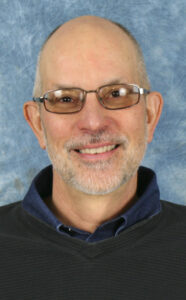
Dan Ebener reviews “Conversational Intelligence,” which he mentioned during the diocesan Synodal Summit June 17 in Davenport.
By Dan Ebener
Book Review

(Editor’s note: During the June 17th diocesan Synodal Summit about welcoming and belonging, Dan Ebener showed two books he uses to teach a graduate course at St. Ambrose University in Davenport entitled Dialogical Skills. Several people have asked him for more information about those two books. Here is his first review.)
Pope Francis’ call for a Synod on Synodality has produced a lot of talk about listening, i.e. synodal listening. But is anyone really listening? What does it mean to really listen? How can we open our eyes to see and ears to hear new things? How can we open our minds to consider new ideas and our hearts to empathize with the emotions of our conversation partners? How can we open our will to change our behavior based on what we understand?
Two books that I use in a leadership course on dialogue skills provide a framework for social interaction, human communication and leadership in an age of isolation, distractions and busy-ness, all of which can be obstacles to what Pope Francis calls “authentic dialogue” (“Fratelli Tutti”). They also review neurological research, which shows that if we are trying to multitask — and one of those tasks is listening — we are not really listening.
“Conversational Intelligence: How great leaders build trust and get extraordinary results,” by Judith E. Glaser (2014), is loaded with findings from neurological research and with practical suggestions for dialogue. She defines conversations as “the ways we connect, engage, navigate and transform the world with others” (p. xix).
Glaser presents three types of conversations: Level I (transactional) are simple exchanges of information, such as to transact business. Level II (positional) are discussions where two parties debate, dispute and attempt to persuade the other. Level III (transformational) are dialogues that transform and shape the reality of both parties. Anyone can improve their skills to listen, summarize, empathize and respond in ways that are consistent with Level III conversations. However, most organizational cultures encourage only Level I and II communication styles.
Glaser points out that our minds are actually wired for the human connectivity that can be attained in Level III dialogues. For example, Glaser states, “At the moment we make contact with other people, biochemical reactions are triggered at every level of our bodies. Our heart responds in two ways — electrochemical and chemical … As our bodies read a person’s energy — which we pick up within ten feet of the person — the process of connectivity begins” (p. 5).
Much of her research on conversations is applied to the practice of leadership. She teaches that (1) leadership determines the quality of our organizational culture; (2) culture depends on the depth of our relationships; and (3) relationships depend on the quality of our conversations. Therefore, we need to practice Level III conversations.
Next time, I will summarize the other book I use in my organizational leadership course: “Humble Inquiry: The gentle art of asking instead of telling,” by Edgar Schein.
(Dan R. Ebener teaches in the Masters of Organizational Leadership program at St. Ambrose University.)











